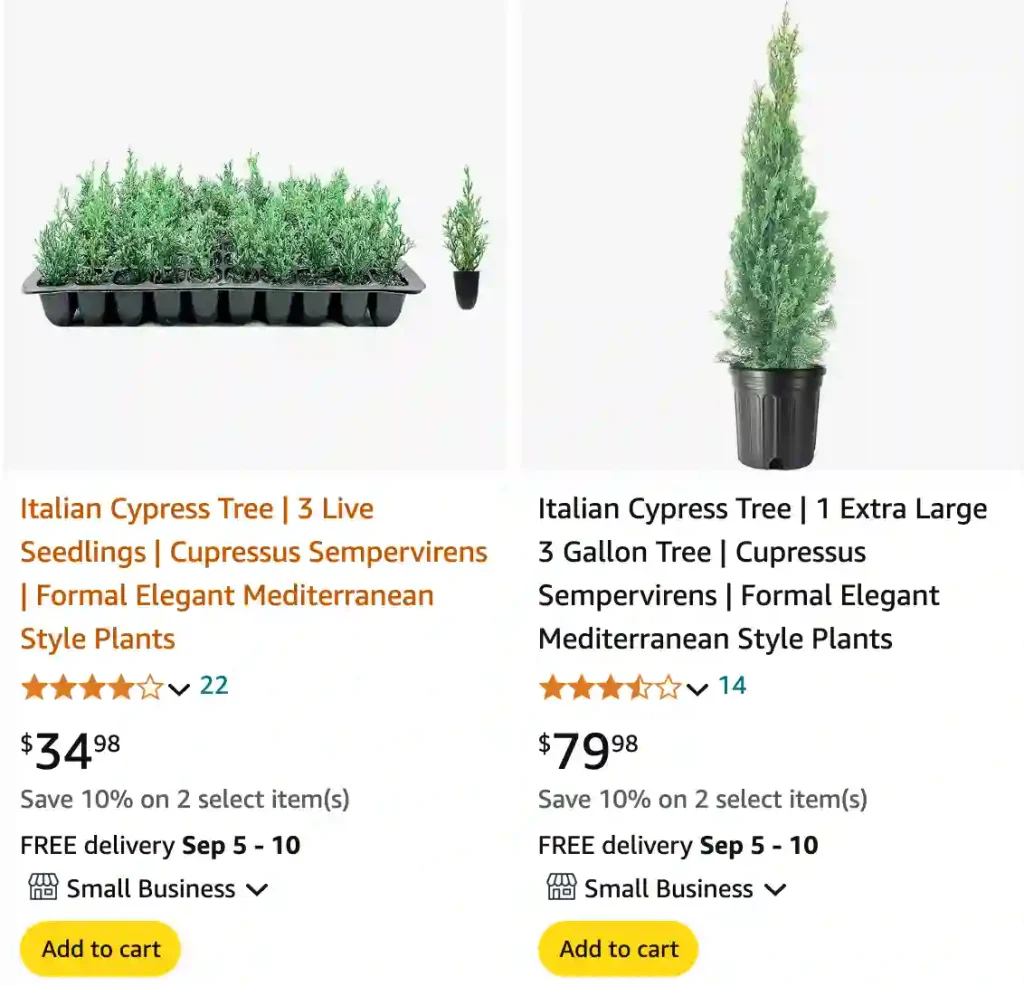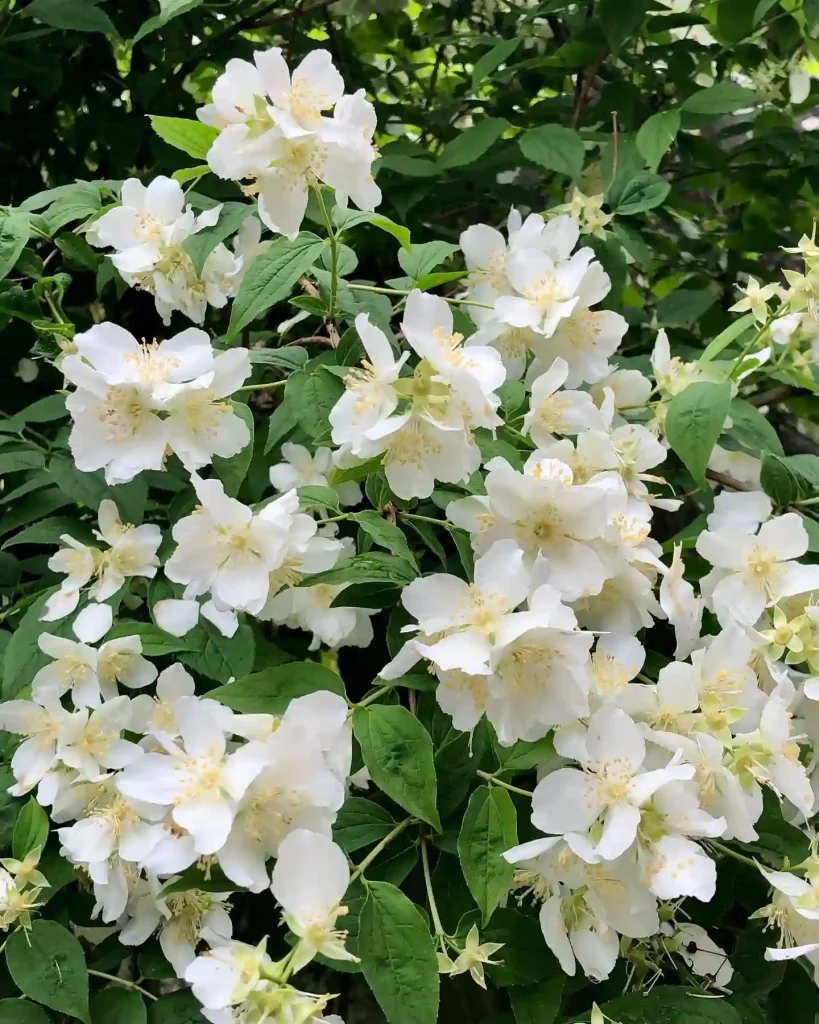
What is Cupressus Sempervirens?
Cupressus Sempervirens, commonly known as the Mediterranean Cypress or Italian Cypress, is a distinctive evergreen conifer native to the Mediterranean region. It’s renowned for its tall, narrow silhouette and dense, dark green foliage, which make it a popular choice for formal landscapes and architectural settings. This tree can be an excellent addition to gardens looking for a stately vertical accent or privacy screen.
16 Species in Genus Cupressus
How to Plant Cupressus Sempervirens?
Planting Cupressus Sempervirens is straightforward, but it requires attention to detail for optimal growth. Start by selecting a location with well-drained soil and full sun exposure. These trees thrive in a range of soil types but prefer slightly acidic to neutral pH. Dig a hole twice the width of the root ball and just as deep. Place the tree in the hole, making sure the top of the root ball is level with the ground surface. Backfill with soil and water thoroughly to remove air pockets. Mulch around the base to retain moisture and suppress weeds.
How Big Does Cupressus Sempervirens Grow?
Cupressus Sempervirens can reach impressive heights, typically growing between 40 to 60 feet tall. In ideal conditions, it can even surpass this height. Its width, however, remains relatively narrow, usually around 5 to 10 feet. This growth pattern makes it particularly useful for creating vertical accents or privacy screens in tight spaces.
How Does Cupressus Sempervirens Differ from Cipres Italiano?
Cupressus Sempervirens and Cipres Italiano are often confused, but they are essentially the same plant. Cipres Italiano is simply the Italian name for Cupressus Sempervirens. Both refer to the same species known for its tall, slender form and evergreen foliage. So, there is no significant difference between them other than the name.
How Fast Do Cupressus Sempervirens Grow?
Cupressus Sempervirens has a moderate growth rate. On average, it grows about 12 to 24 inches per year. This growth rate can vary based on soil quality, water availability, and climate conditions. Proper care and maintenance, such as regular watering and occasional fertilizing, can help optimize its growth.
Where is Cupressus Sempervirens Found?
Originally, Cupressus Sempervirens is native to the Mediterranean Basin, including regions of Italy, Greece, Turkey, and Cyprus. It is well-adapted to the Mediterranean climate, characterized by hot, dry summers and mild, wet winters. Outside its native range, it has been successfully planted in various temperate regions around the world, provided it receives appropriate care.
Why Do Cupressus Sempervirens Not Lose Leaves?
Cupressus Sempervirens is an evergreen tree, meaning it retains its leaves (or needles) throughout the year. Unlike deciduous trees, which shed their leaves in autumn, evergreens like Cupressus Sempervirens maintain their foliage for several years before replacing it. This adaptation helps it survive in its native Mediterranean climate by providing continuous cover and reducing the need for regrowth during harsh weather conditions.
Cupressus Sempervirens vs Arborvitae
When comparing Cupressus Sempervirens with Arborvitae (often Thuja varieties), there are several key differences. Cupressus Sempervirens is typically taller and more columnar in shape compared to the broader, more rounded Arborvitae. Arborvitae often grows faster and has a softer texture, while Cupressus Sempervirens is more rigid and has a more formal appearance. Additionally, Arborvitae can be more tolerant of a variety of soil conditions, whereas Cupressus Sempervirens prefers well-drained soils.
Cupressus Sempervirens vs Cypress
The term “cypress” can refer to several different species within the Cupressaceae family, including those in the genera Cupressus, Taxodium, and others. While Cupressus Sempervirens is a type of cypress, it differs from other cypress species like the Bald Cypress (Taxodium distichum) or the Monterey Cypress (Cupressus macrocarpa). Cupressus Sempervirens has a more upright growth habit and finer foliage compared to the broader, more spreading forms of other cypress species.
Cupressus Sempervirens vs Hesperocyparis
Cupressus Sempervirens and Hesperocyparis (a genus formerly included in Cupressus) are both members of the Cypress family but have different characteristics. Hesperocyparis includes species like the Monterey Cypress, which has a more sprawling habit and different foliage texture compared to Cupressus Sempervirens. In recent taxonomic revisions, many of the cypress species were reclassified under the Hesperocyparis genus, but Cupressus Sempervirens remains in the Cupressus genus.
How to Care for Cupressus Sempervirens?
Caring for Cupressus Sempervirens involves regular maintenance to keep it healthy and vibrant. Ensure it receives full sunlight and water it consistently, particularly during dry periods. It generally requires minimal pruning, but occasional trimming can help maintain its shape and remove any dead or damaged branches. Fertilizing once a year with a balanced fertilizer can also promote healthy growth.
How to Propagate Cupressus Sempervirens?
Propagation of Cupressus Sempervirens is typically done through seeds or cuttings. For seeds, sow them in a seed tray filled with well-draining soil and keep them in a warm, sunny location until they germinate. For cuttings, take semi-hardwood cuttings in late summer, dip them in rooting hormone, and plant them in a pot with a mixture of sand and peat. Keep the cuttings moist and in a warm environment until they develop roots.
What to Plant With Cupressus Sempervirens?
Cupressus Sempervirens pairs well with a variety of plants, including low-growing shrubs and flowering perennials that can complement its tall, narrow form. Consider planting it alongside lavender, rosemary, or ornamental grasses to enhance its Mediterranean feel. For a more formal look, combine it with boxwood or other evergreen shrubs.
Can You Grow Cupressus Sempervirens Indoors?
Growing Cupressus Sempervirens indoors is challenging due to its size and light requirements. While young plants might survive indoors with plenty of sunlight and proper care, they are best suited for outdoor planting where they have room to grow and thrive.
Is Cupressus Sempervirens Toxic?
Cupressus Sempervirens is not considered toxic to humans or pets. However, as with many plants, it’s a good practice to avoid ingesting plant material, particularly if you have pets that might chew on the foliage.
Benefits of Cupressus Sempervirens
Cupressus Sempervirens offers several benefits, including its ability to create a dramatic vertical element in landscaping, provide year-round green cover, and act as a privacy screen. Its resistance to drought once established makes it a practical choice for low-maintenance gardens in suitable climates.
Common Problems with Cupressus Sempervirens
Common issues with Cupressus Sempervirens include susceptibility to root rot in poorly drained soils and fungal diseases like Cypress Canker. Regularly inspect your trees for signs of distress, such as yellowing foliage or dieback, and address any issues promptly to maintain plant health. Proper spacing and well-drained soil can help mitigate these problems.
Comparing Cupressus Sempervirens with Similar Plants
When comparing Cupressus Sempervirens with similar plants, it’s essential to consider factors like growth habit, soil preferences, and aesthetic appeal. Each plant has unique characteristics that make it suitable for specific landscape purposes, so choosing the right one depends on your garden’s needs and conditions.
If i die, water my plants!



